
REPORTS
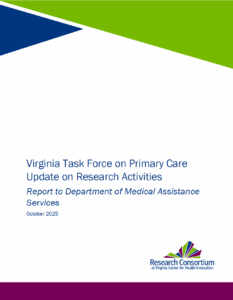
Virginia Task Force on Primary Care Update on Research Activities
Reported to Virginia Department of Medical Assistance Services (DMAS) on October 1, 2025.
Per the 2024 recommendation of the Virginia Task Force on Primary Care (Task Force), the Virginia Center for Health Innovation (VCHI) launched the Research Consortium at VCHI. This Consortium was established to enable the Task Force and VCHI to produce timely, rigorous, and actionable research for the Department of Medical Assistance Services (DMAS) and other state partners to guide primary care and health policy.
Following the appropriation of funds and execution of contracts with DMAS in May 2025, the Research Consortium, on behalf of the Task Force, has provided eight individual research products to the Department to support Medicaid policy in primary care.

Virginia Primary Care Scorecard
The Virginia Primary Care Scorecard is developed by the Research Consortium at VCHI on behalf of the Virginia Task Force on Primary Care, funded by the Virginia General Assembly.
Published June 30th, 2025.
The scorecard aims to provide an annual tracking tool to monitor the health and well-being of primary care in Virginia through an interactive exploration of data.
Key findings include:
Virginia spent 2.1 to 3.9% of total healthcare dollars on primary care, lower than the previous year.
13.7 to 45.5% of localities in Virginia lack a sufficient number of primary care physicians.
33.1 to 43.7% of insured Virginians utilized primary care services, with variation by payer type and locality.
Quality of life decreased overall in Virginia and 93 localities are worse than the national average.

Measles Outbreaks & Vaccine Policy
Authored by Emma Ford, MPP, and Lauryn Walker, PhD, for VCHI's Capitols to Commonwealth blog series.
Published March 7th, 2025. Updated March 11th, 2025.
Since the beginning of 2025, the Centers for Disease Control (CDC) has reported 3 measles outbreaks, totaling 222 cases and 2 deaths, with 95% of these cases occurring among unvaccinated individuals. By far the largest outbreak is currently occurring in Texas, where the Texas Department of Health and Human Services reports an ongoing outbreak with 159 individuals infected, 22 hospitalized and one fatality, and an additional outbreak in nearby Lea County, New Mexico where there have been 10 reported cases and 1 death. There are currently no reported cases in Virginia, although Virginia did have multiple smaller outbreaks in 2024.

Is Virginia's Medicaid Expansion Really in Jeopardy?
Authored by Lauryn Walker, PhD, for VCHI's Capitols to Commonwealth blog series.
Published February 20th, 2025. Updated February 24th, 2025.
Potentially. Congress is currently debating a proposal to reduce the federal match for the Medicaid expansion population (adults up to 138% of the federal poverty line). If passed, Virginia’s current budget requires that all expansion enrollees be disenrolled. The Virginia State Senate has included language in their proposed budget that would require a special committee meeting to address policy options before disenrollments begins. No such amendment was proposed in the House.
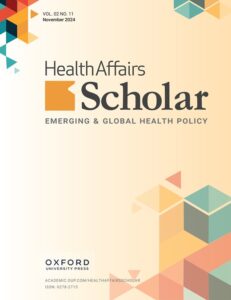
Increased spending on low-value care during the COVID-19 pandemic in Virginia
Authored by Michelle S Rockwell, Sitaram Vangala, Jillian Rider, Beth Bortz, Kyle Russell, Marcos Dachary, Lauryn Walker, A Mark Fendrick, and John N Mafi.
Published in Health Affairs Scholar on October 23rd, 2025.
Potentially. Congress is currently debating a proposal to reduce the federal match for the Medicaid expansion population (adults up to 138% of the federal poverty line). If passed, Virginia’s current budget requires that all expansion enrollees be disenrolled. The Virginia State Senate has included language in their proposed budget that would require a special committee meeting to address policy options before disenrollments begins. No such amendment was proposed in the House.
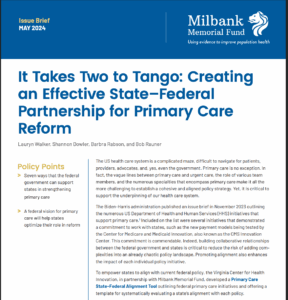
It Takes Two to Tango: Creating an Effective State–Federal Partnership for Primary Care Reform
Authored by Lauryn Walker, Shannon Dowler, Barbra Rabson, and Bob Rauner.
Published by Milbank Memorial Fund in May 2024.
Seven ways that the federal government can support states in strengthening primary care.
A federal vision for primary care will help states optimize their role in reform.
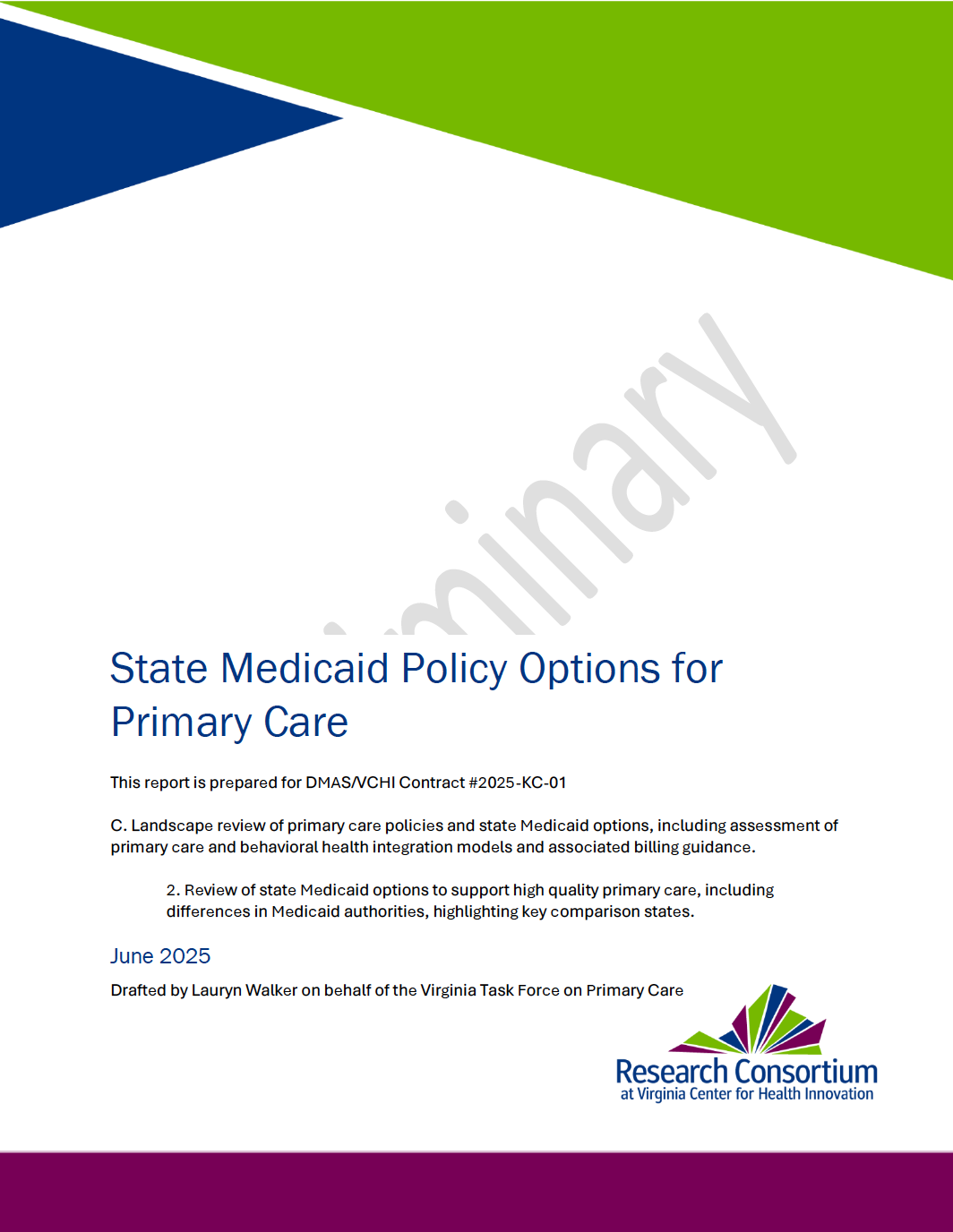
State Medicaid Policy Options for Primary Care
Drafted by Lauryn Walker on behalf of the Virginia Task Force on Primary Care.
Preliminary findings released June 30th, 2025.
Medicaid has several policy levers to support high quality primary care, ranging greatly in complexity and cost. This brief landscape review is aimed at describing key policy options and the various benefits or challenges associated with each. This review is not intended to describe all possible policy levers used by every state, but instead major strategies that could be leveraged. This report should not be seen as an endorsement of any specific policy option on behalf of the Virginia Task Force on Primary Care.
Authorities described in this report are generally ordered from most complex to least complex to execute from the perspective of the state Medicaid agency. Complexity also may be paired with additional flexibility to use federal funds for novel purposes.
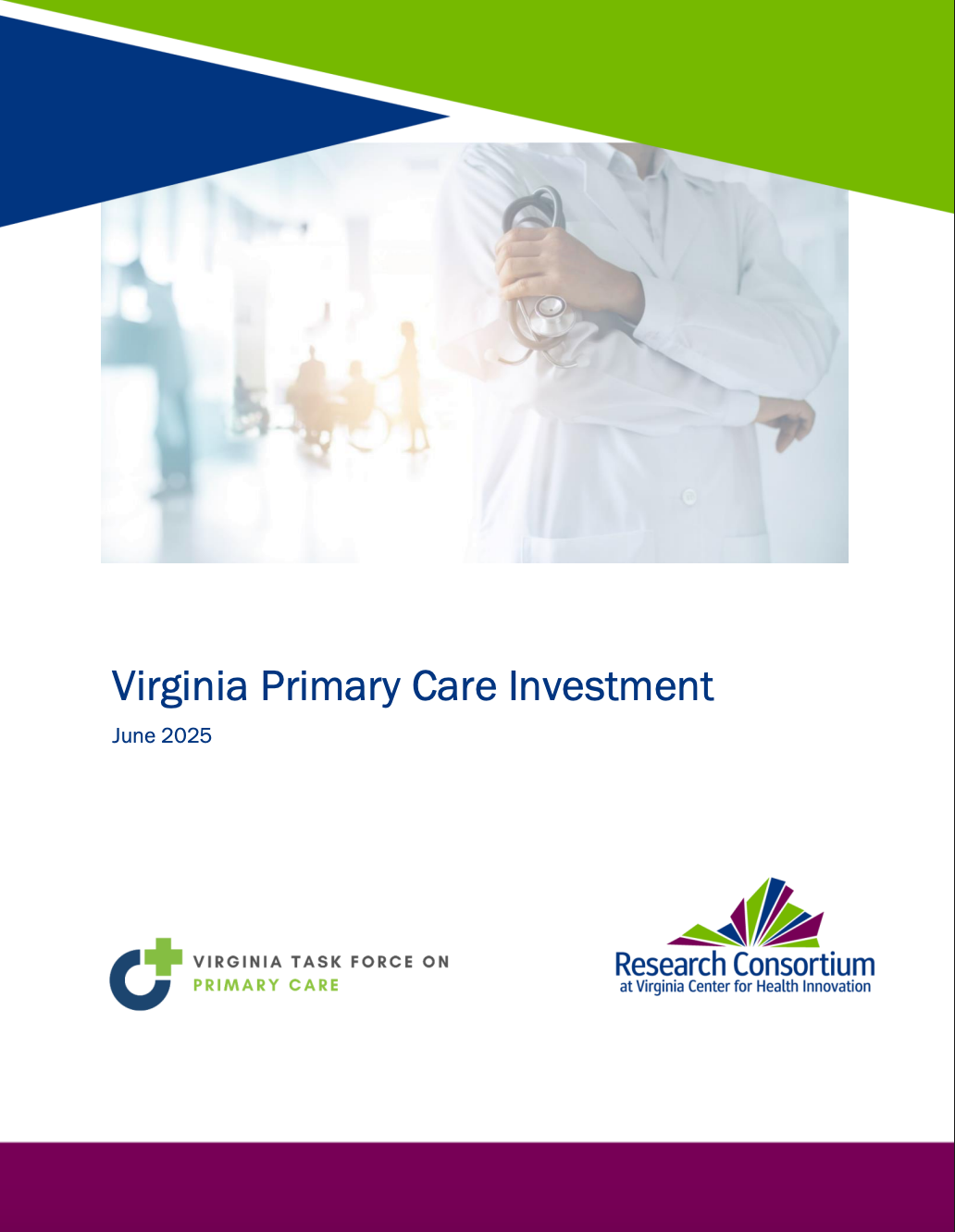
Virginia Primary Care Investment Report
Published on behalf of the Virginia Task Force on Primary Care, this report is intended to inform state policy and guide future recommendations of the Task Force.
Published June 30th, 2025.
The Virginia Primary Care Investment Report presents an inflation-adjusted, claims-based analysis of primary care investment across major payer types from 2019 to 2023 with estimates derived from the Virginia All-Payer Claims Database (APCD). Primary care is foundational to a high-performing, cost-effective healthcare system— yet most states lack a consistent way to measure investment in the primary care ecosystem. To address this barrier, the Virginia Task Force on Primary Care publishes an annual Primary Care Investment Report to inform state policy and Task Force initiatives. Now in its fourth year, this report provides a longitudinal view of claims-based primary care investment in Virginia, using the Virginia All-Payer Claims Database (APCD) (see Appendix A for methodology). The findings in this report represent inflation-adjusted spending trends across commercial, Medicaid, and Medicare markets, offering policymakers, payers, and provider leaders with actionable insight into the health of the primary care ecosystem and trends in expenditures.
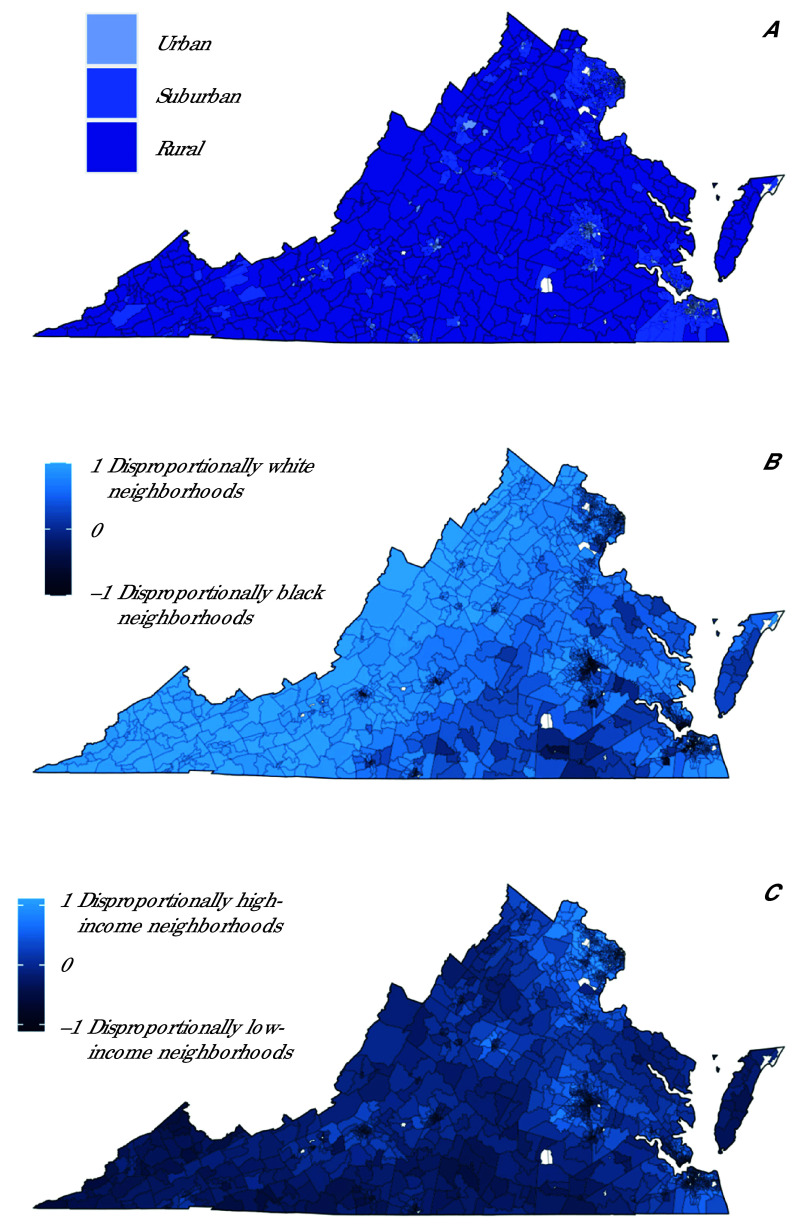
Neighborhood Determinants of Primary Care Access in Virginia
Authored by Hannah M Shadowen, Jennifer L Gilbert, Benjamin Webel, Adam Funk, Jong Hyung Lee, Scott M Strayer, Roy T Sabo, Lauryn S Walker, Michael Topmiller, Andrew Mitchell, Jacqueline B Britz, Andrew J Barnes, and Alex H Krist.
Published by the National Library of Medicine on May 27th, 2025.
Primary care is the foundation of any health care system. Yet, workforce shortages have worsened in the United States. Understanding characteristics of where workforce gaps are greatest is key to developing effective workforce solutions. We used the 2019 Virginia All-Payers Claims Database to identify primary care physicians (PCPs) and the number of distinct patients seen by each physician. In Virginia, 56.0% of census tracts had adequate PCP access. No association was found between PCP access and predisposing factors. Multiple enabling factors (ie, marital status, education, English language proficiency) were significantly associated with PCP access.

Medicaid and the Budget Debate
Authored by Lauryn Walker, PhD for VCHI's Capitols to Commonwealth blog series.
Published February 28th, 2025.
On Tuesday, February 25, the U.S. House of Representatives voted 217 – 215 to pass the Budget Resolution proposed by House Republicans, which includes $1.5 trillion in spending cuts over 10 years. Separately, the Senate passed its own budget framework last week, which includes two separate bills, the first of which increases spending by $342 billion.
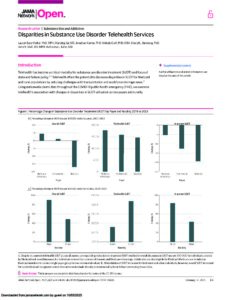
Disparities in Substance Use Disorder Telehealth Services
Authored by Lauryn Saxe Walker, PhD, MPH, Manying Cui, MS, Jonathan Cantor, PhD, Melody Craff, PhD, MBA, Cheryl L. Damberg, PhD, John N. Mafi, MD, MPH, AND Katherine L. Kahn, MD.
Published in JAMA Open Network on February 12th, 2025.
Telehealth has become a critical modality for substance use disorder treatment (SUDT) and focus of state and federal policy.Telehealth offers the potential to decrease disparities in SUDT for Medicaid and rural populations by reducing challenges with transportation and workforce shortage areas. Using nationwide claims data throughout the COVID-19 public health emergency (PHE), we examine telehealth’s association with changes in disparities in SUDT utilization across payers and rurality.

Defining the State Role in Primary Care Reform
Authored by Lauryn Walker, Lisa Dulsky Watkins, and Christoper F. Koller.
Published by Milbank Memorial Fund in May 2024.
Six activities can help states optimize their authority to improve primary care.
Providing data transparency on the health of primary care at the state and local level is a first responsibility, followed closely by building a coalition.
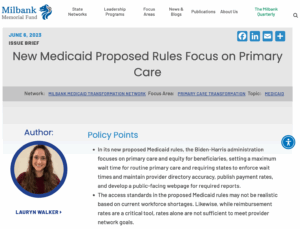
New Medicaid Proposed Rules Focus on Primary Care
Authored by Lauryn Walker.
Published by Milbank Memorial Fund on June 6th, 2023.
In its new proposed Medicaid rules, the Biden-Harris administration focuses on primary care and equity for beneficiaries, setting a maximum wait time for routine primary care and requiring states to enforce wait times and maintain provider directory accuracy, publish payment rates, and develop a public-facing webpage for required reports.
The access standards in the proposed Medicaid rules may not be realistic based on current workforce shortages. Likewise, while reimbursement rates are a critical tool, rates alone are not sufficient to meet provider network goals.